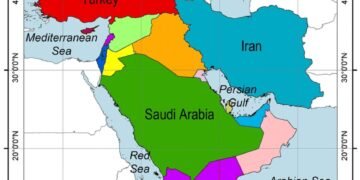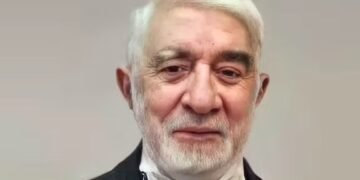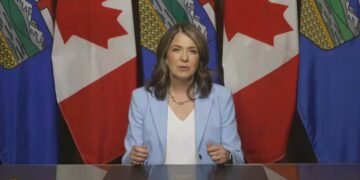“Editor-in-Chief: SHAPOUR-T”
It seems that weakening Iran is no longer just a possibility. This is a multi-layered and targeted project, implemented by the West patiently and step-by-step. The plan does not only target foreign policy and defense capabilities, but also aims at the economy, environment, social fabric, and culture. The goal is to hand over a crisis-stricken and powerless Iran to the people after the government’s removal — a country unable to regain its former position in the region.
From the Zangezur Corridor to a Dry Land
Geopolitical developments in the South Caucasus have placed Iran in a difficult position. The Zangezur Corridor project deals a serious blow to the country’s transit routes, removing Iran from part of the international communication and transportation network. As a result, the country’s economic and trade influence will diminish.
In addition, the environmental crisis also accelerates the weakening of Iran. The drying up of Lake Urmia, rivers, and wetlands speeds up the “scorched earth” process. The West exploits these weaknesses to advance its goals.
Social Collapse and Cultural Instability
Alongside external pressures, the Islamic Republic’s inefficient domestic policies also intensify the crisis. Divorce rates are rising alarmingly. Meanwhile, declining social cohesion and the spread of corruption have undermined the foundations of society. The livelihood crisis further fuels this situation. As a result, the nation’s ability to resist foreign pressure decreases, making it easier for the West to gain political and cultural influence.
The Risk of Losing the Strait of Hormuz
One of the major future scenarios is Western control over the Strait of Hormuz — the heart of global energy exports. If Iran loses control of this passage, its most important geopolitical leverage will vanish, marking the complete elimination of Iran’s power from regional equations.
Tomorrow’s Iran: Free but Powerless
Given current conditions and trends, the fall of the Islamic Republic in the not-so-distant future is likely. However, even if the government changes, a weak Iran may remain — a country without water resources, without geopolitical influence, and trapped in social and economic crises. This is the ultimate goal of the scenario to weaken Iran: a free Iran, but one unable to play an effective role in the region and the world.

 English
English






































